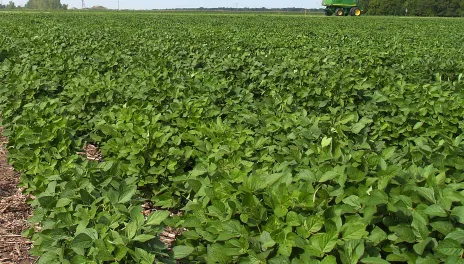Soybean Cyst Nematodes
Hello! I hope all is well. As many of you know I have been out on Family Medical Leave. I’m doing better and I’m back to work.
It has been a cold and somewhat snowy winter. The average high temperature should now be 29 degrees Fahrenheit. The next week we will have temperatures below this average.
There is a webinar being planned for March 15, 2022 from 10:00 AM to 12:00 PM called USWBSI Scabinar. This will be about Fusarium head blight or scab. Go to the following link to register for the event: scabusa.org/scabinar . If you have any questions, feel free to contact the Extension office.
Soybean cyst nematode (Heterodera glycines) is a very small microscopic parasitic worm that feeds on roots of soybean, dry bean and a few weed hosts. The weed hosts are henbit and field pennycress.
Soybean cyst nematode was first found in North Dakota in 2003 in Richland County. Today it has spread into at least 31 North Dakota Counties. II is very widespread and containing high populations in Richland, Cass, Traill, Grand Forks, and Steele Counties. It is present in Griggs County only at the 50 to 100 eggs per 100 cc of soil in 8 fields of the County (21%). I’m not sure how long it has been in the County, but potentially since 2013. Thirty-one fields in the county have tested negative for soybean cyst nematode including three samples from this past fall. However, three fields from this past fall tested positive at the 50 to 100 eggs per 100 cc of soil.
Nationally, soybean cyst nematode is estimated to cause more yield loss then the next three to five most important soybean diseases. It makes diseases like sudden death and brown stem rot worse.
Soybean cyst nematode is favored by dry and hot growing seasons, and these above-ground symptoms are brought on more by drought stress.
Soybean cyst nematode is a manageable disease of soybean, but proactive management is critical. Early detection with soil sampling and aggressive disease management such as planting resistant varieties and rotating to non-host crops. Be sure to rotate the host resistant varieties as there are only two sources, PI88788 and Peking. Both are currently effective in the state.
Soybean cyst nematode is moved by any means that soil is moved. So water, wind, and machinery are ways to move soil particles and eggs and cysts.
Soybean cyst nematode overwinters as eggs encased in the female cyst, which helps protect them from the environment and predators. After hatching and a first mold, second-stage juveniles emerge and penetrate soybean roots using a spearlike mouth structure called a stylet and then enter the root tissue. The juvenile nematode establishes a feeding site, called a syncytium, and becomes sedentary. The juvenile enlarges and molts three times to become an adult. The female adult remains attached to the syncytium for the duration of its life cycle. Once the female is fertilized, it enlarges into a lemon-shaped body, which can contain up to 500 eggs. As the female body enlarges, it often breaks through the epidermis of the root. The female dies when the plant matures and then turns into a brown cyst. The cyst is a tough structure that can protect eggs for years. Under favorable conditions, a life cycle can be completed about once a month. In North Dakota, two to three life cycles are thought to be common.
Be vigilant in knowing whether you have soybean cyst nematodes. Have a great day!
